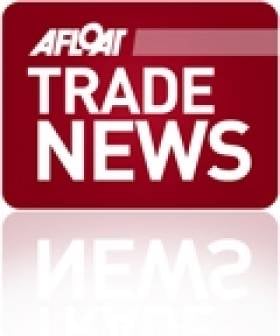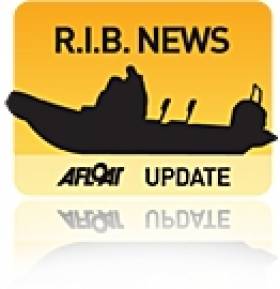Displaying items by tag: Euromarine
Boating has always been a part of the business for Yachtsman Euromarine, says managing director Matthew McGrory, going back to when the company began as MJ O'Neill Insurances Limited in 1974.
Started by his grandfather Matthew James O'Neill and father William McGrory, the then Clondalkin-based brokerage at first dealt with insurance across the board, marine coverage being just one facet of a portfolio that also included cars, homes and businesses.
But from this foundation, Yachtsman has grown over the decades into Ireland's leading boat insurance specialist, protecting boaters' lifestyles while sharing their passion for all things marine.
Of course, the broker's expertise in the marine business is bolstered by its consummate experience in the general insurance market.
William McGrory took the helm after his father-in-law's death in 1976, and with his son Matthew coming on board, the business was steered towards a huge leap forward in 1984.
This was thanks to a partnership with various syndicates at Lloyd's of London, which saw the company appointed as Lloyd's coverholder for the British insurance giant to underwrite household insurance in Ireland.
In the years that followed, Matthew's passion for boating saw the already established marine side of the business grow to such an extent that, by 1995, it was decided that developing a specialist market for marine insurance was the way forward. Thus the Yachtsman brand was born in May 1997.
"We obtained a second underwriting agency from Lloyd's for pleasure craft insurance," says Matthew, "and we haven't looked back since."
First-hand experience
Launching with a staff of just three, the Yachtsman brand brought to the Irish market a brand new product offering wider marine cover with a competitive edge to premiums.
But more than that, there was the firm’s small but dedicated staff - who were themselves involved in boating as a pastime, and as such had a complete understanding of clients’ requirements - which soon became recognised as a key benefit of signing up for a policy with Yachtsman.
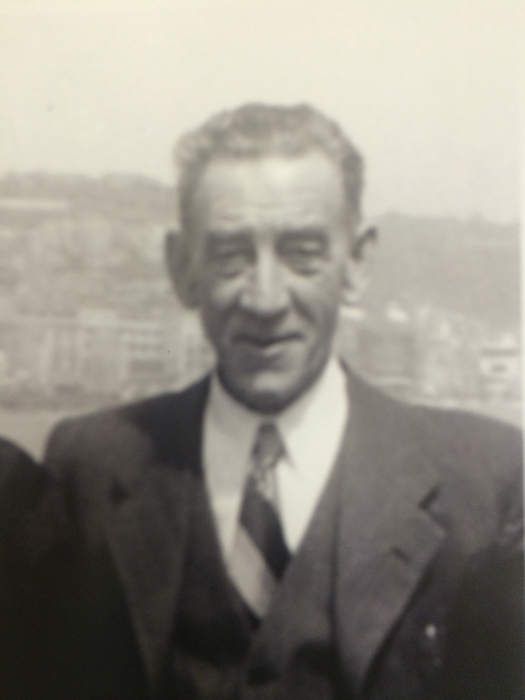
Company founder – Yachtsman Euromarine was started by Matt McGrory's grandfather Matthew James O’Neill
The next five years was a period of significant growth for the Yachtsman brand that saw the business move from its office in Clondalkin to new, larger premises in Clane, Co Kildare.
It was also in this period that the McGrorys focused their efforts on the developing maritime brokerage and sold off the general insurance business to specialise fully in pleasure craft.
The market was expanding fast as the economy boomed, and Yachtsman was there from the very beginning to offer value-for-money policies backed up with priceless first-hand experience.
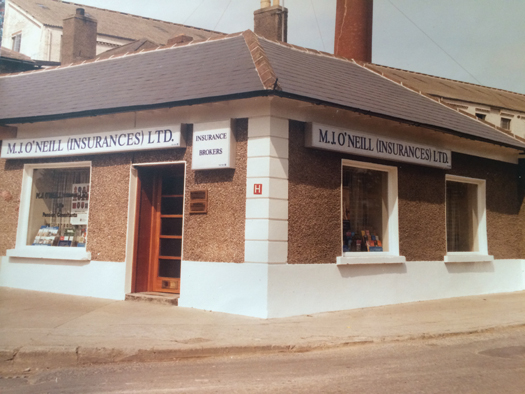
The Clondalkin, County Dublin premises of founders, MJ O’Neill Insurances Limited in 1974.
New decade, new name, new markets
The next big step for the company came in February 2005, when MJ O’Neill Insurances Limited - now trading solely as Yachtsman - bought out competitor Euromarine, growing its staff to seven and re–launching the following month as the combined brand Yachtsman Euromarine at that year’s Dublin Boat Show in the RDS.
“The purchase of Euromarine opened up new markets to us in the marine trades and yacht club sections,” says Matthew, who adds that “with the combined turnover of both companies, we now had better buying power in the insurance market, and secured underwriting authorities with the two biggest marine syndicates at Lloyd’s.”
Another invaluable asset was Bill Cullen, who oversaw Yachtsman Euromarine's continued growth throughout the ‘Celtic Tiger’ years and even now, after retiring in 2010, still keeps a keen eye on progress.
A successful business must keep evolving and developing its skills to stay ahead, and the next stage for Yachtsman Euromarine would test this to the limit. In 2010, the brokerage was appointed by the Lloyd’s syndicates to handle their marine claims in Ireland.
“The business model for this was based on a Canadian coverholder that has a similar-size turnover to Yachtsman,” explains Matthew. “After many meetings with our syndicates in Lloyd’s, we took on the task and employed two more staff, one with claims-handling experience from a local insurer and the second with a marine trade and repair background.”
As a new venture for the business, this shift into trades and repairs was not without its teething problems - no doubt exacerbated by the contraction of the boating market as the credit crunch persisted in putting the squeeze on wallets.
But the benefits would come with time, and Matthew is particularly proud that Yachtsman has the support of “a very comprehensive panel of repairers that can produce a quality repair and get the client back on the water quickly. At the end of the day, that's what's important."
The same time period would also see Yachtsman Euromarine become the title sponsor of the ISA RIB Challenge, promoting safe boating to younger budding sailors throughout the country.
But there’s only so far a business can grow in its home market, and Yachtsman would look abroad for its next leap forward.
Conquering Spain
“For a number of years we had been transacting business in Spain, primarily for the ex–pat market,” says Matthew, who adds that those new overseas contacts were put to good use in 2012 with the launch of Yachtsman Euromarine’s first Spanish-language policy to cover that local market.
Though beginning with only a small presence in Spain - a perennially popular destination for Irish retirees, holidaymakers and boating enthusiasts - Matthew says that foothold was invaluable in helping Yachtsman to identify the “massive potential” in the local pleasure craft insurance market.
The next step would be exploring how to export Yachtsman’s range of services into Spain.
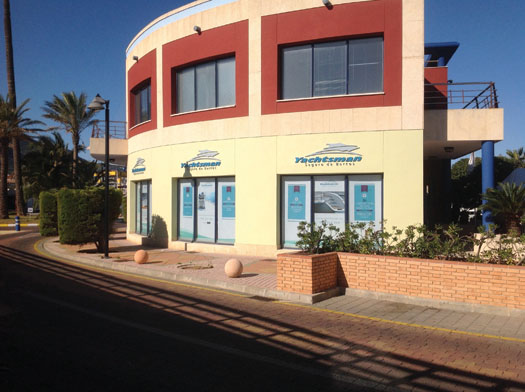
The opening of Yachtsman’s first international office in Denia, Spain in a prime position on the Costa Blanca
“To put it in context, one small geographical area in Spain has the same pleasure craft market size as the whole of Ireland,” he says. “So we began a research project into how it might be possible to take on, and manage from our office in Clane, large volumes of cover, while managing the risk-loss potential in multiple locations.”
Thanks to the support of Enterprise Ireland, Yachtsman developed what Matthew describes as an “innovative system” that allows for the underwriting of risks to take in more parameters in setting rates. "This has completely changed how premiums are calculated, and we are better able to reward policies with no claims but also pinpoint hotspots where frequent claims are becoming a concern."
Forty years at the front
Fast-forward to March of this year, and the opening of Yachtsman’s first international office in Denia, a prime position on the Costa Blanca at the midway point between Alicante and Valencia, and the main link to the Balearic Islands.
This opening also saw the hiring of the brokerage’s first Spanish staff, allowing the business to move forward in developing its products for the local market.
After the lean recession years, business is on the up again across the marine markets - and none more so than for Yachtsman Euromarine, which is celebrating a remarkable 40 years in business this month.
For Matthew McGrory, it’s a time to look back with pride at the reputation Yachtsman has earned within the industry as an authority in boat insurance, not to mention for its superior customer service and the expert advice and innovative solutions the company delivers for the marine sector.
As Yachtsman’s website simply states, they know about boats.
As for where Yachtsman goes from here? “Well, building our business in Spain will keep us busy and growing for the next few years,” says Matthew, “but then who knows? I’ve plenty of ideas!”
Contact: Yachtsman Euromarine, College Road, Clane, Co.Kildare T: 045 982668
Foynes Takes Regional RIB Title at Royal Cork
The first of three regional finals of the ISA Yachtsman Euromarine Rib Challenge 2011 was held at Royal Cork Yacht Club last Saturday and it was an exciting start to the competition.
This year the competition was designed to encourage the younger members of our boating community to take to the water in a safe, responsible and most important an enjoyable way. On registration the competition sponsor Matt McGrory who was in attendance started off proceedings in a positive and fun manner by giving each entrant a competition T Shirt and taking a team Photo. This got all teams into a fun and competitive frame of mind.

Negotiating the tasks on the Royal Cork RIB course. Photo: Matt McRory
This Regional Final saw the ISA introduce a new format for the competition. Each Team had to carry out 10 tasks in a 3 hour period. These tasks consisted of "on the water maneuvering" of their craft and some off the water activities such as "rescue line throwing, Knots and various questions on all aspects of boating".
For the 3 hour period you could feel the tension as all teams went from task to task, when the time was up ISA RDO Ciaran Murphy had the task of adding up the scores. Throughout the day the high scores in each competition differed with no Team showing dominance. In the end it was a tight affaire and the Top Six were:

RIB Competitors at Royal Cork
1st Place – Foynes 1
2nd Place – Foynes 2
3rd Place – Royal Cork Yacht Club
4th Place – Glandore Harbour Yacht Club
5th Place - Atlantic Sailing Club
6th Place – Sailing Academy of Ireland
The top four teams now qualify through to the National Final where they have a chance of winning the ISA Yachtsman euromarine Rib Challenge 2011 top prize of a Club Rib.


























